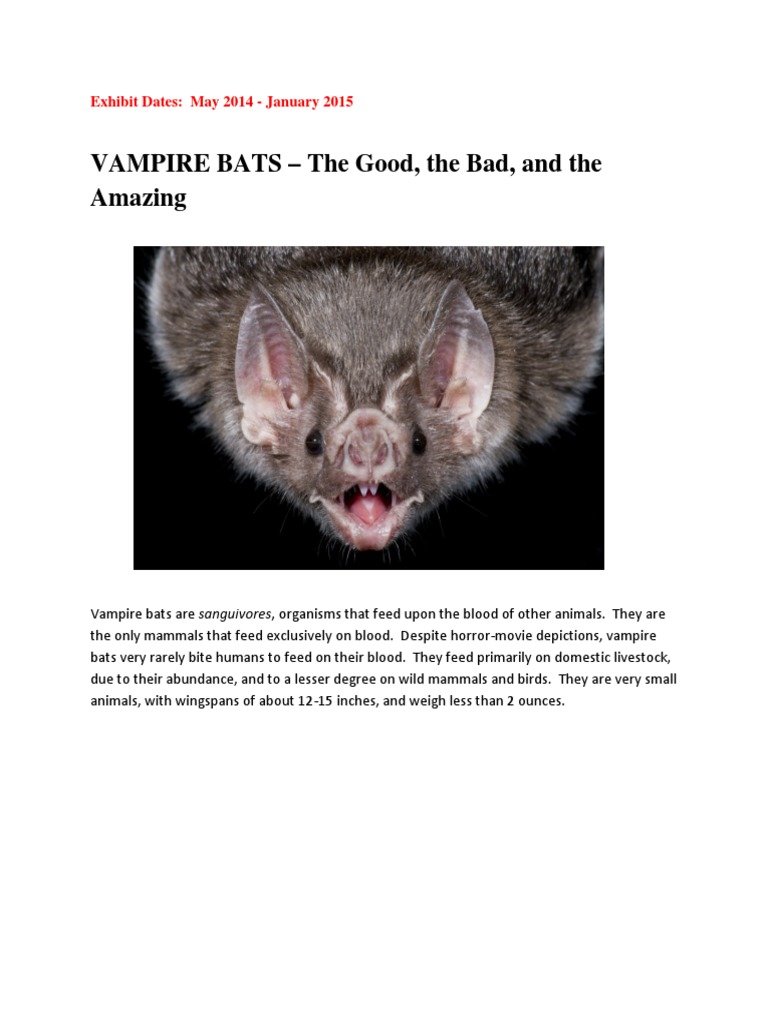
Vampire bats belong to a small group within the bat family, specifically the subfamily Desmodontinae. They’ve carved out a niche that’s unlike any other bat species, and understanding their journey helps us see not just how they live, but also how they impact their environment. So, pull up a chair and let’s chat about the evolution of these unique nocturnal creatures!
Origins of Bats
The story of vampire bats starts with the broader family of bats, which are believed to have first emerged around 50 million years ago. Early bats were quite different from the ones we see today. They primarily feasted on fruit and insects, much like many of their present-day relatives. These early ancestors had simple dietary needs, and their primary focus was survival in a world filled with predators.
As time went on, different bat species began to adapt to their environments. This led to the development of diverse diets, habitats, and behaviors across various bat families. For example, while some bats continued to thrive on fruits and insects, others began to explore different food sources. This is where the story of our vampire bat starts to get interesting!
The Shift to Blood-Feeding
Around 15 million years ago, a few bat species began to move away from their fruit and insect diets and toward a more unusual source: blood. This shift didn’t happen overnight. Instead, it was a gradual adaptation to their environment. These bats, specifically the ones that would eventually become vampire bats, found a unique niche in the ecosystems of Central and South America.
You might be wondering why they would choose blood as a food source. Blood is rich in nutrients, and it can provide a more dependable resource than the ever-changing availability of fruit or insects. It’s like choosing to dine at a buffet instead of wandering around a farmer’s market, hoping to find something appealing. Vampire bats evolved specialized traits that allowed them to feed on blood without causing significant harm to their hosts, allowing them to feast while keeping their meals alive.
Special Adaptations
Vampire bats boast some fascinating adaptations that make them proficient blood-feeders. First off, their sharp teeth allow them to make small incisions in the skin of their hosts, which typically include other mammals like cattle, birds, and even humans. Here’s the thing: vampire bats have also developed a unique anticoagulant saliva that keeps the blood flowing while they feed. This means they can drink for a while without the wound closing up, giving them more time to enjoy their meal.
Think about it this way: it’s like having a built-in tool to keep the buffet flowing! This specialized saliva is not only crucial for their feeding habits but also earns them an important spot in the ecosystem, as their feeding helps control animal populations and promotes blood circulation in their hosts.
Social Behavior and Feeding Habits
You may be surprised to learn that vampire bats are quite social creatures. They often feed in groups and share meals with fellow bats. If one bat fails to find a meal, it might receive a blood meal from a more successful bat through food sharing. This cooperative behavior enhances their survival chances, creating a network of support.
It’s fascinating to see how these social bonds play a part in their survival. In the world of vampire bats, the rule is: “You scratch my back, and I’ll scratch yours.” This kind of altruism is rare in the animal kingdom and showcases the complexity of their social structures.
Vampire Bats and Ecosystems
Vampire bats are more than just survival-minded creatures; they also play a significant role in their ecosystems. By feeding on blood, they can help keep populations of their host animals in check, particularly in areas where certain species might thrive unchecked. This balance is essential in maintaining healthy ecosystems.
Let’s not forget about the waste left behind after feeding. While it might seem gross, bat droppings, or guano, is a valuable fertilizer that enriches the soil, benefiting plant life. This creates a ripple effect: healthier plants support larger populations of herbivores, leading to a vibrant ecosystem. So, while vampire bats might seem daunting, they contribute positively to their environments.
Conservation and Future
Despite their critical role in the ecosystem, vampire bats face challenges due to habitat destruction and human-wildlife conflict. As deforestation continues and agricultural practices expand, the natural habitats of these bats are shrinking. This loss not only threatens their populations but also disrupts the delicate balance they maintain within their ecosystems.
Conservation efforts are essential to ensure their survival. Supporting wildlife habitats and promoting coexistence with local communities can help vampire bats thrive in their natural environments. After all, if we lose these fascinating creatures, we risk upsetting a balance that has existed for millions of years.
The evolutionary history of the vampire bat is a captivating story of adaptation, survival, and ecological balance. From their origins as humble insectivores to their remarkable blood-feeding adaptations, these creatures have carved out a unique niche in the animal kingdom.
While they may evoke fear or discomfort, it’s important to appreciate their role in nature. So, the next time you think about vampire bats, remember they’re not just blood-sucking villains. Instead, they’re essential players in maintaining the health of their ecosystems, reminding us of the intricate connections that exist in nature. Embracing their history may help foster a deeper understanding and respect for these remarkable animals.

